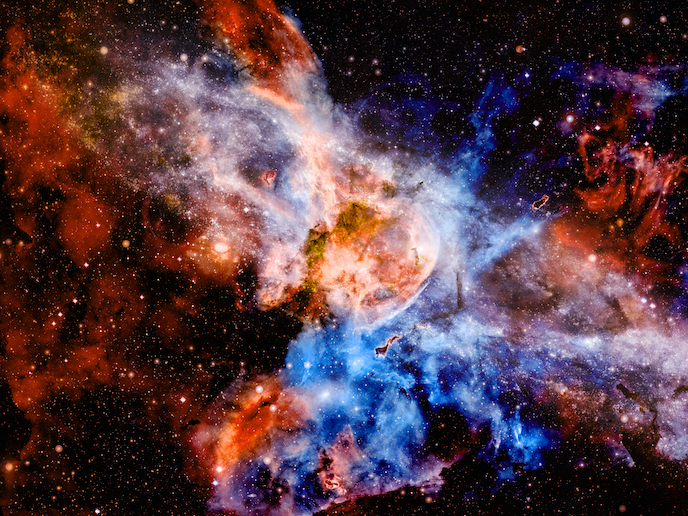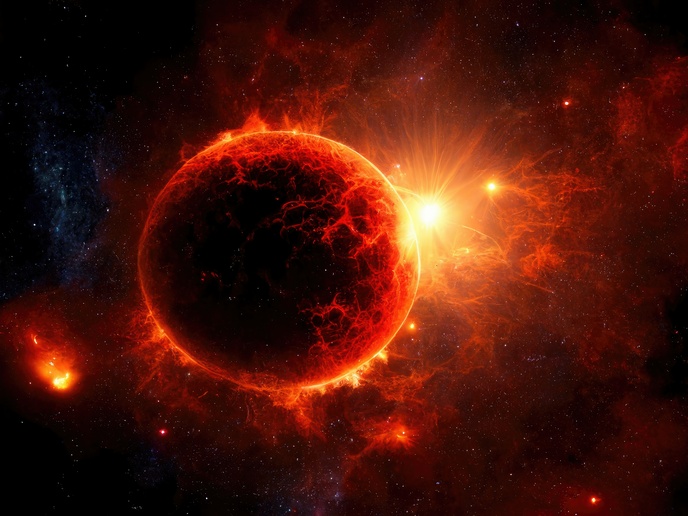Innovative model helps unlock secrets of faraway galaxies
Astronomers are time travellers. The more distant the galaxies they encounter, the closer they get to the beginning of the universe, because of the time it takes light to reach us. This is where many clues as to the origins and evolution of the cosmos can be found. “The DeepIMPACT research focused on a specific era of cosmic evolution called the Epoch of Reionisation(opens in new window),” explains project coordinator Livia Vallini, now postdoctorate researcher at the Scuola Normale Superiore(opens in new window) in Pisa, Italy. “This occurred when the universe was between 300 million and 1 billion years old: the universe is over 13 billion years old. Gases started to collapse to form galaxies, and within these galaxies, stars were born,” says Vallini, who conducted her research in DeepIMPACT with support from the EU’s Marie Skłodowska-Curie Actions programme. This era is critical to our understanding of the cosmos, because these early galaxies had a profound impact on the evolution of the universe. Each new star produced photons – light – which travelled out of these early galaxies, affecting the properties of gases across the universe. “This is what we mean when we talk about the Epoch of Reionisation,” adds Vallini. “We now live in a universe that is completely reionised.”
Let there be light
Scientists are still unclear however as to exactly when this era started and ended, as well as the properties of the galaxies that contributed most to this process. These first-generation galaxies are also extremely far away, and very difficult to analyse. Because of this, simulations and mathematical models are needed. The goal of the DeepIMPACT project was to identify peculiar properties of faraway galaxies which, already at that time, hosted supermassive black holes. This will help astronomers to identify them. This research was undertaken at Leiden University(opens in new window), the Netherlands. It enabled Vallini to work closely with Xander Tielens, a professor and world-renowned figure in the field of astrochemistry. “During my PhD in Italy, I focused on modelling the luminosity of faraway galaxies,” Vallini notes. “The DeepIMPACT project was based on my hunch that galaxies formed early on were much smaller and compact than, say, our own. If these galaxies have a black hole at the centre, then this will have a greater impact on the luminosity across the whole of the galaxy, because of its relatively small size.”
Discovering the cosmos
Vallini developed models designed to enable astronomers to identify faraway galaxies based on this fact. The models should help scientists to gain a better understanding of the actual size of these galaxies, and the effect of black holes on the surrounding environment. Completed in January 2020, Vallini has been able to publish over 10 academic papers on her findings related to the discovery of distant galaxies. One of the unexpected benefits of the DeepIMPACT models is that they are adaptable and flexible enough to be applied to the nearby universe. “Even though our focus was on faraway galaxies, our DeepIMPACT results have been used to plan observations both in the distant universe and in nearby galaxies,” says Vallini. “In this way, DeepIMPACT has contributed a small piece of a much bigger puzzle of galaxy evolution. There are of course still many things we don’t understand," Vallini concludes.







